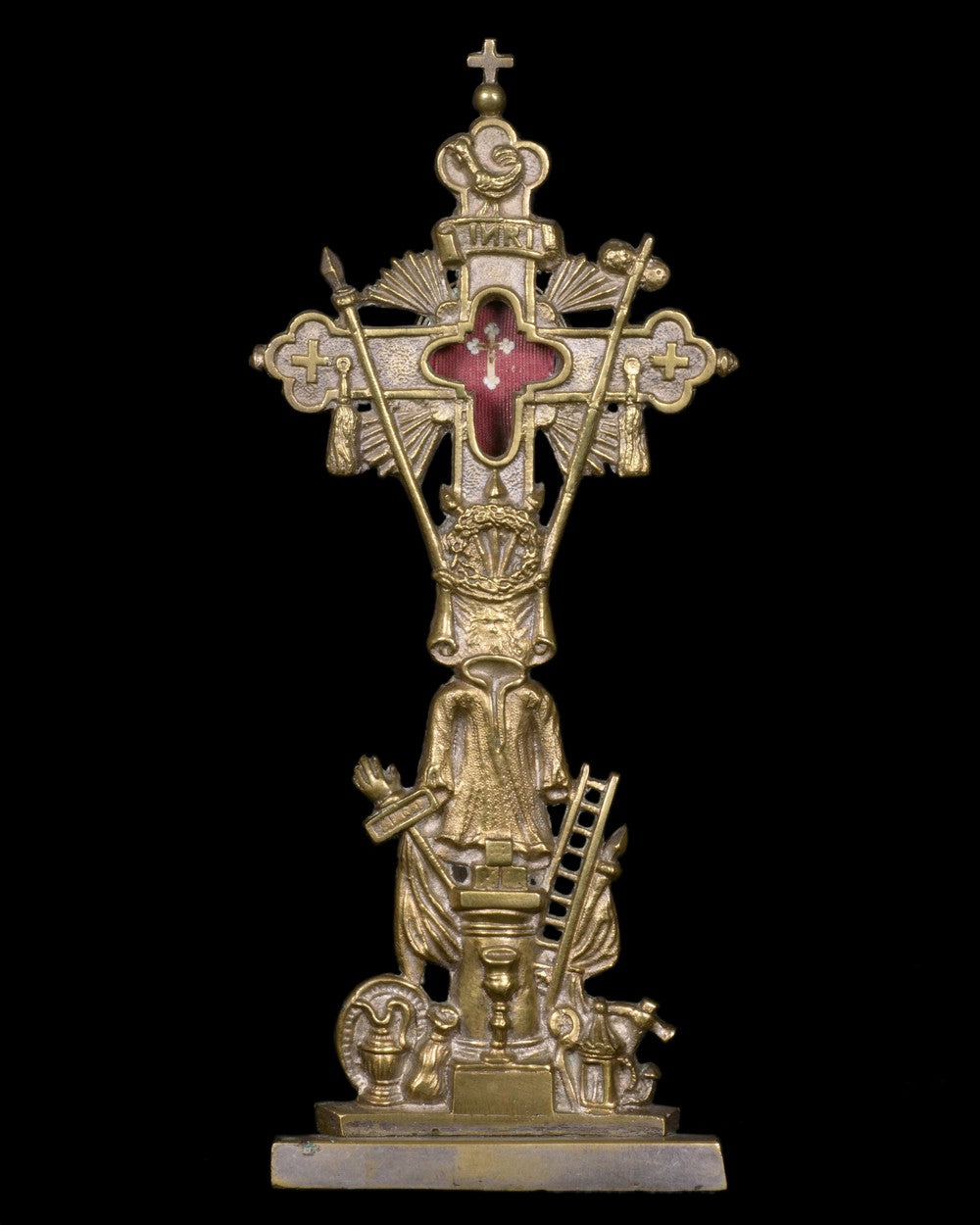RELIQUARY OF THE TRUE CROSS
RELIQUARY OF THE TRUE CROSS
Our prices are in euros, the prices converted in dollars or other currencies can vary according to the rate.
Free Worldwide Shipping – Secure and Protected Delivery
ref: #RK00-276This reliquary of the True Cross in bronze is a particularly original work in its shape and typology. This reliquary cross is decorated with the Instruments of the Passion and symbolic elements linked to it such as the rooster recalling the betrayal of Saint Peter. The handle on the reverse indicates that the work was probably also used as a kiss of peace.
The relic of the true cross . is placed in the cross-shaped opening at the crossroads.
The entire decor includes elements and objects relating to the Passion of Christ. The lower part of the work is decorated with the pillar where Christ was whipped and on which a chalice is represented.
The bottom of the reliquary is decorated with a scale, the cup and an ewer as well as a lantern, a Roman trophy and the Instruments of the Passion: a hammer and pincers. On the pillar are the playing dice, then the tunic topped with the Holy Face, the Crown of thorns and nails. The upper part is decorated with the cross with the spear and the pike. The window of the cross is provided with light rays. The INRI is placed at the top of the cross. and topped with the rooster of Saint Peter.
Ecclesiastical stamp present and in place
PERIOD : 19th century
DIMENSION : 23.5cm X 10cm
SIZE : 9.3"
In Christian symbolism, the Passion cross corresponds to a cross installed outdoors or in a church, or painted or sculpted, characterized by the representation of the “instruments of the Passion” of Christ, with the aim of reminding the faithful of the succession of its events.
The Cross of the Passion is sometimes called the “Cross of the Rooster” when it is surmounted by the image of this animal. It can be a monumental cross (mission cross), or a portable cross (processional cross) which can also be large. The Cross of the Passion is characterized by the presence of Arma Christi, in varying quantities, the most frequent being the spear, the ladder and the tools: hammer, nails, pincers, etc.
The cross of the Passion is different from the crucifix in that the character of the crucified Christ does not necessarily appear there. On the other hand, certain Passion crosses in Germany (notably in the Black Forest) also show the centurion Longinus and are therefore called “Longinus crosses” ( Longinkreuz ). The traditional figures of the Virgin and Saint John may also be present.



